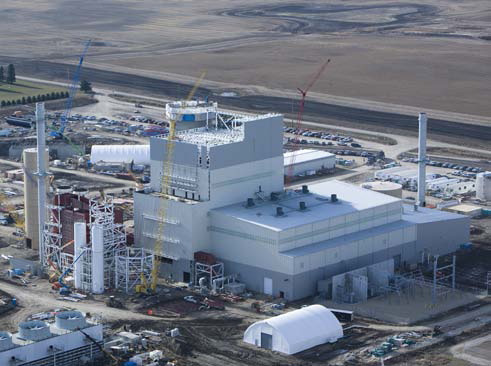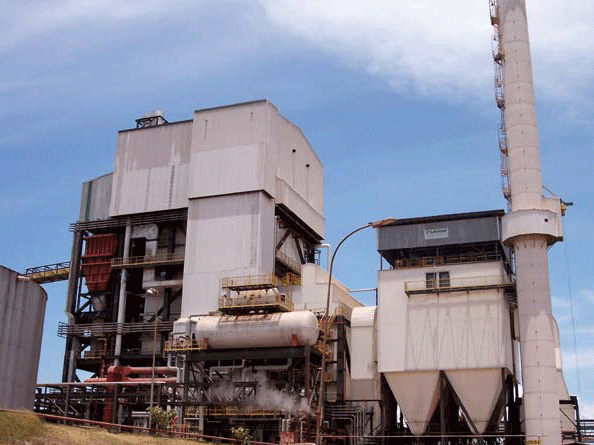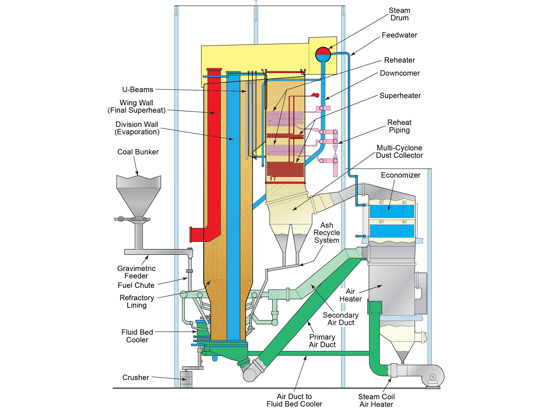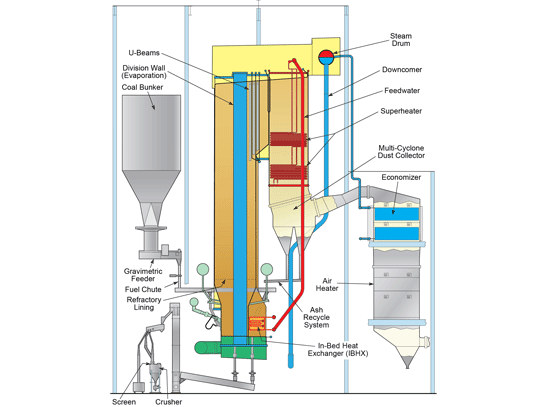Circulating Fluidized-Bed (IR-CFB) Boilers
Drawing upon our extensive technical expertise and operating experience, B&W developed the Internal Recirculation Circulating Fluidized-Bed (IR-CFB) boiler which is the technology of choice for power plant owners seeking economy, reliability and flexibility. In addition, load-following capabilities are attainable with B&W’s in-bed heat exchanger technology.
B&W’s IR-CFB technology offers:
- Higher reliability and availability
- Lower maintenance costs
- High combustion efficiency
- A compact, economical design
- Reduced erosion
- Fuel flexibility
- Low emissions
Design features improve performance, reduce costs, and minimize maintenance requirements.


- Capacity: To 2,200,000 lb/h (277 kg/s) or greater as required
- Steam pressure: To 2600 psig (17.9 MPa)
- Steam temperature: As required, usually to 1050F (566C)
B&W’s IR-CFB low maintenance design features:
- Two-stage particle collection requires less maintenance than hot cyclones:
- Eliminates thick refractory linings
- Subject to lower erosion and can be thermally cycled faster than thick refractory
- U-beams capture and recycle solids at lower gas velocities
- Multi-cyclone dust collector (MDC) with metallic cyclones operate at lower temperature
- Air slides eliminate loop seals and loop seal blowers
- No sootblowers are needed with lower gas velocity convection pass; fine solids clean the tubes
- MDC storage hoppers offer independent heat transfer control and more operating flexibility
- Thin cooled refractory with higher stud density in furnace is a robust wall protector
- IR-CFB uses 1/10 the mass of refractory of a hot cyclone CFB
- Reduced diameter zone (RDZ) almost completely eliminates solids erosion of membrane wall at the transition section (solids flow obstructions from refractory and change in wall angle)
- Bubble caps minimize back sifting of bed solids and bubble cap erosion
- U-beams are contained in a water/steam-cooled enclosure eliminating hot expansion joints
- Open bottom design can handle tramp materials in feed



